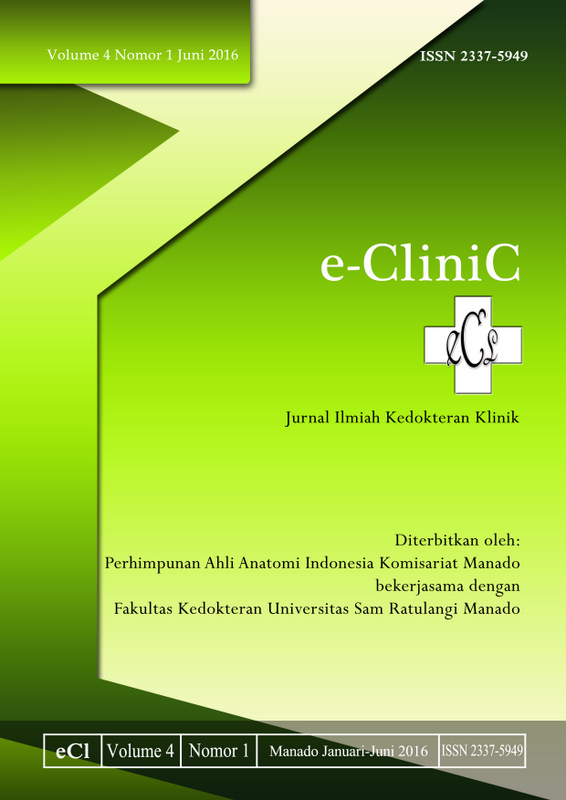Gambaran nyeri kepala primer pada mahasiswa angkatan 2013 Fakultas Kedokteran Universitas Sam Ratulangi Manado
DOI:
https://doi.org/10.35790/ecl.v4i1.12076Abstract
Abstract: This study aimed to obtain the profile of primary headache among medical students batch 2013 in University of Sam Ratulangi Manado. This was a descriptive study. The headache description was assessed with questionnaires (Pain questionnaires PERDOSSI). There were 176 respondents consisted of 45 males and 131 females. The percentages of each headache type were as follows: tension-type 64%, migraine without aura 20%, migraine with aura 15%, and cluster headache 1%. The results showed that stress triggered 84% of headache cases. There were 73% of respondents who suffered from headache had family history of headache.
Keywords: primary headache, types of headache
Â
Abstrak: Penelitian ini bertujuan untuk mendapatkan gambaran nyeri kepala primer pada mahasiswa kedokteran Universitas Negeri Sam Ratulangi angkatan 2013. Jenis penelitian ini deskriptif. Deskripsi nyeri kepala pada responden dinilai dengan kuesioner (kuesioner nyeri PERDOSSI ). Terdapat 176 responden, terdiri dari 45 responden laki-laki dan 131 responden perempuan. Persentase untuk setiap jenis sakit kepala ialah sebagai berikut: tipe tegang 64%, migraine tanpa aura 20%, migrain dengan aura 15%, dan nyeri kepala klaster 1%. Hasil penelitian menunjukkan bahwa stres memicu 84% dari kasus nyeri kepala. Pada penelitian ini didapatkan 73% dari responden yang menderita serangan nyeri kepala memiliki riwayat keluarga sakit kepala.
Kata kunci: nyeri kepala primer, jenis sakit kepala
Downloads
Published
How to Cite
Issue
Section
License
COPYRIGHT
Authors who publish with this journal agree to the following terms:
Authors hold their copyright and grant this journal the privilege of first publication, with the work simultaneously licensed under a Creative Commons Attribution License that permits others to impart the work with an acknowledgment of the work's origin and initial publication by this journal.
Authors can enter into separate or additional contractual arrangements for the non-exclusive distribution of the journal's published version of the work (for example, post it to an institutional repository or publish it in a book), with an acknowledgment of its underlying publication in this journal.
Authors are permitted and encouraged to post their work online (for example, in institutional repositories or on their website) as it can lead to productive exchanges, as well as earlier and greater citation of the published work (See The Effect of Open Access).







